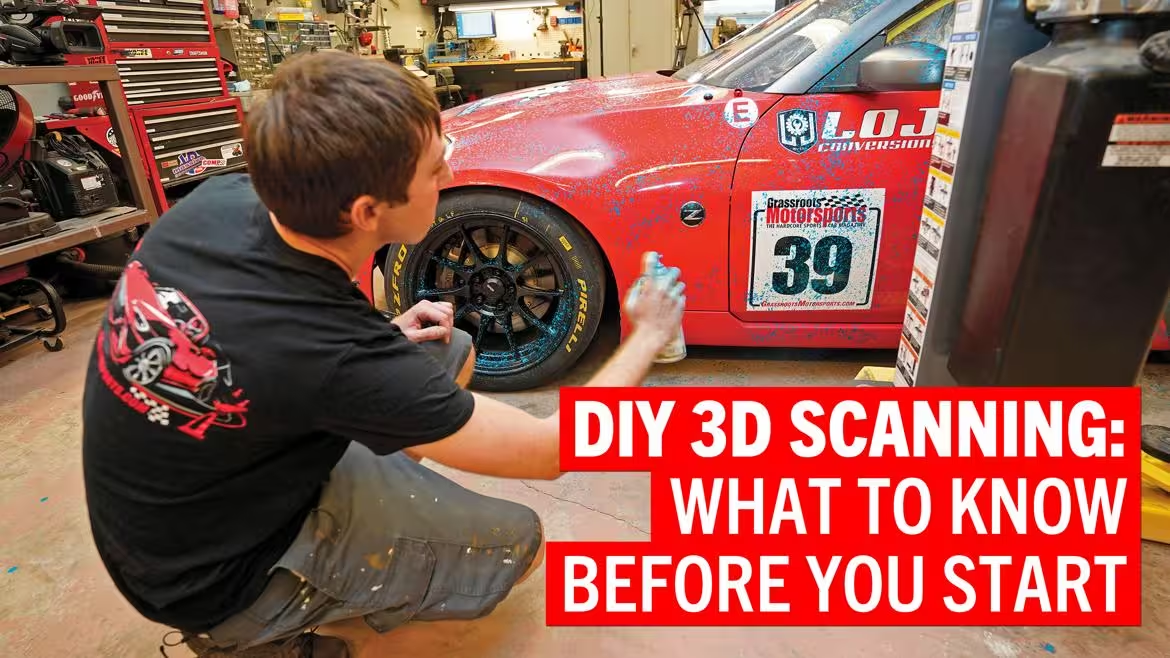If it seems like this series has been a bit unfocused, well, it has been. While we’re pretty good at running a project car series, we’re total amateurs at building a home machine shop.
What 3D Scanning Can and Can’t Do
A few installments ago, we wrote, “There’s no print button for a part you’ve drawn on the computer.”
And then we proved ourselves wrong by setting up a 3D printer. But while there’s an easy path out of the computer, there’s no easy path into the computer.
Except, that is, for 3D scanning. The technology works exactly how it sounds: Point a magical device at your part, then watch it appear in a digital environment. In theory, hours of laborious measuring and modeling can be completely removed from the workflow.
Why would you want this? Because very few parts–especially very few parts built in a home shop–are designed in the computer with the necessary context around them.
Think of how aerospace engineers design an airplane part, perhaps the landing gear. They don’t take a few rough measurements of the fuselage, draw a plain box in the computer, then design a folding wheel mechanism that’s about the right size and slap it in there.
Instead, they have the entire plane already modeled in software from the start, which means the landing gear can be designed to fit perfectly, interact properly with the existing parts, be built with serviceability in mind and more.
We know, we know: You’re not building a landing gear. But you’re probably building alternator brackets, or turbo manifolds, or suspension parts, or even just planning an engine swap.
And unlike those aerospace engineers, you can’t exactly open up a detailed CAD model of your car to see precisely how much room there is under the hood or in the wheel well.
Unless, that is, you have a 3D scanner. In theory, all you have to do is point it at your existing parts, then suddenly you’ll have as much context as you’d like instantly appear in the computer. Or, if you’re just copying existing parts, a 3D scanner promises to be a real-life copier, unlocking a world of cheap and easy replacement parts.
But the reality isn’t quite this simple. 3D scanners don’t actually model real parts in the computer. Instead, they generate point clouds. And that’s a key limitation you’ll need to know…
Click Here to Read the Full Original Article at Grassroots Motorsports Online Articles…

